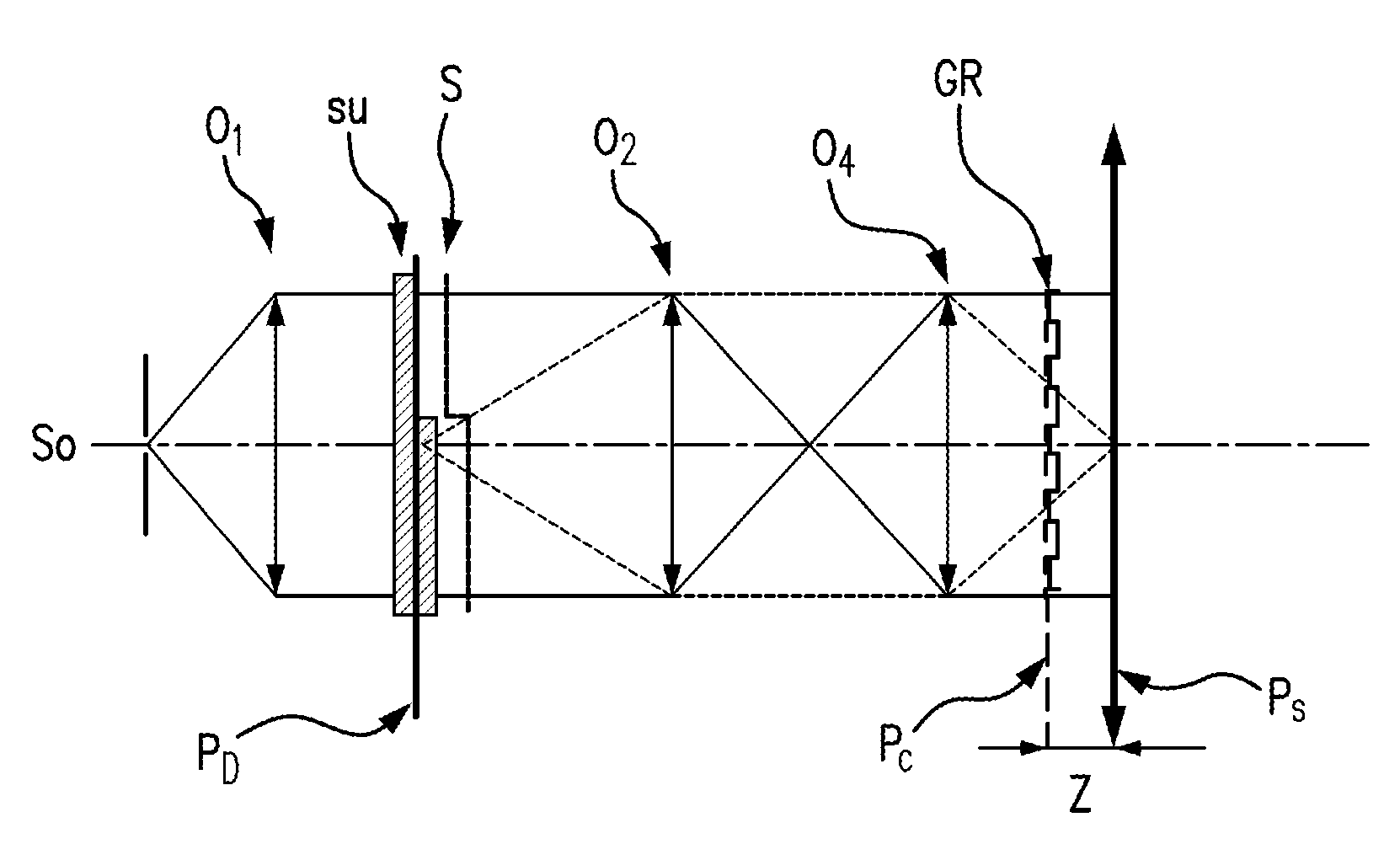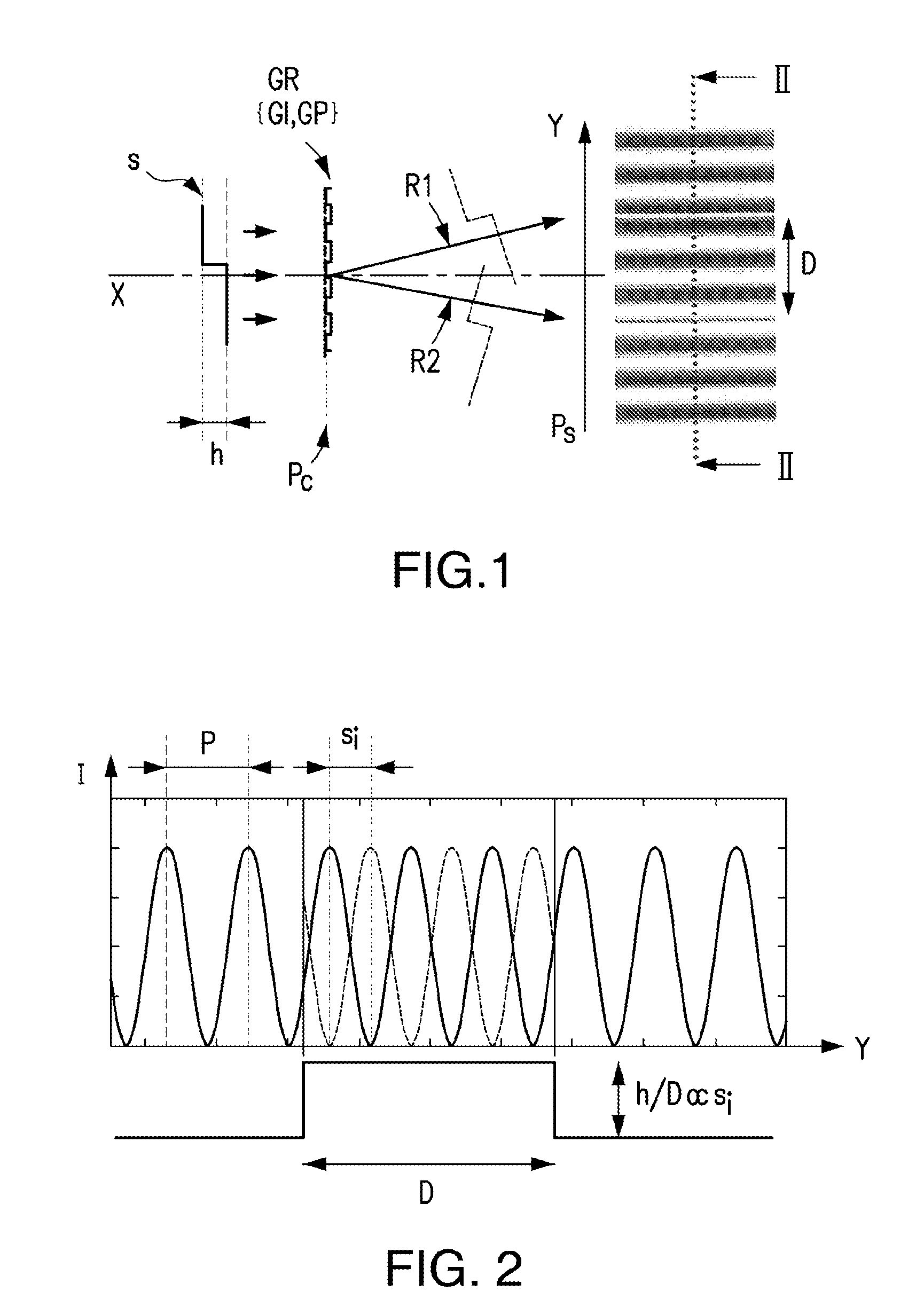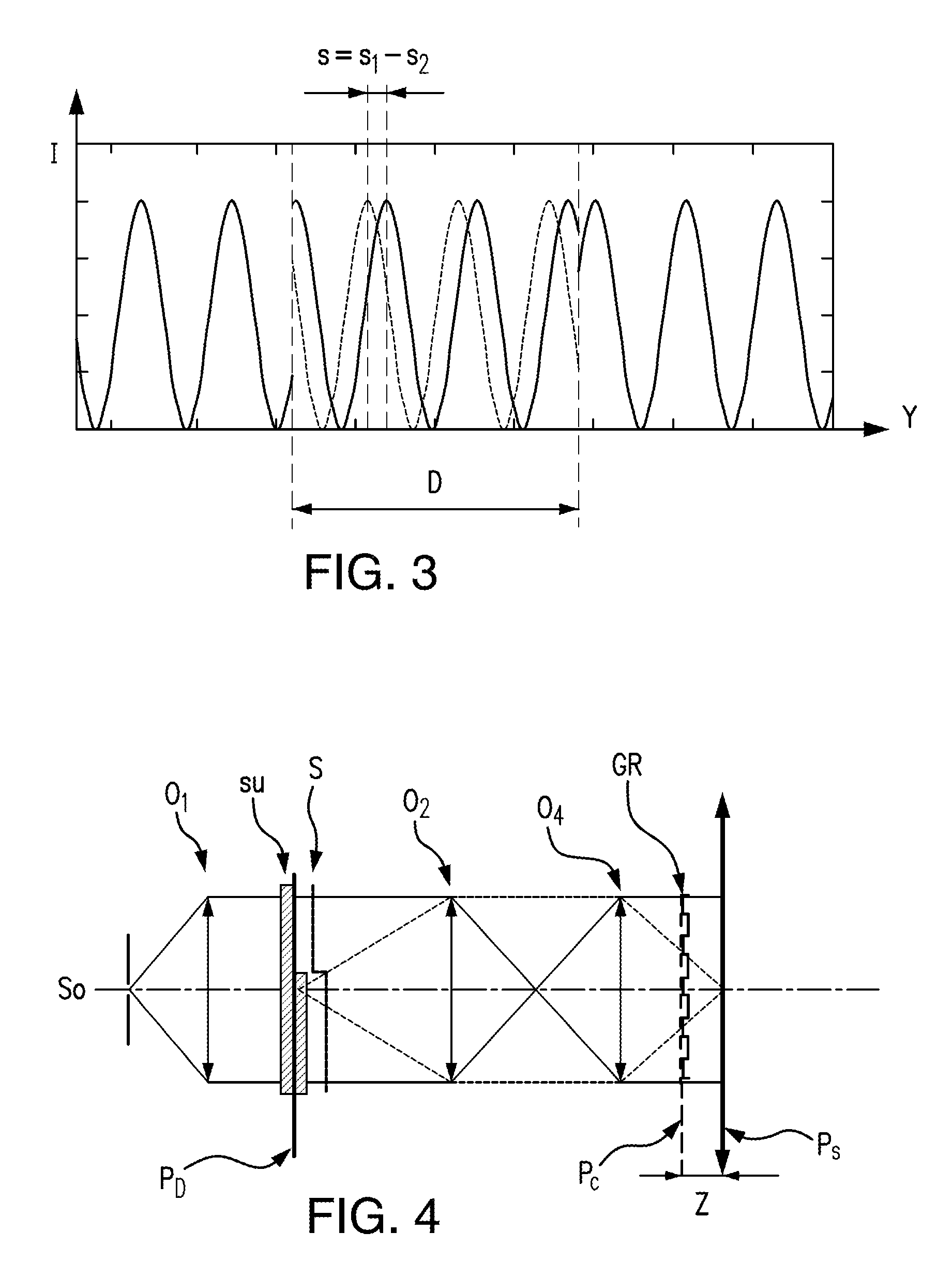Wavefront analysis method involving multilateral interferometry with frequency difference
a wavefront analysis and multi-lateral interferometry technology, applied in the field of analysis of the wavefront of light beams, can solve the problems of inability to analyze divided wavefronts, inability to simultaneously implement one single wavelength, prohibitive limitation, etc., and achieve the effect of estimating the error
- Summary
- Abstract
- Description
- Claims
- Application Information
AI Technical Summary
Benefits of technology
Problems solved by technology
Method used
Image
Examples
Embodiment Construction
[0078]On FIG. 1, in order to illustrate, as simply as possible, the present invention, the incident beam with a wavelength λi propagating according to the axis X has a wavefront S with two parts having a difference in level with a height h. The two-dimensional grating GR is positioned in a plane Pc preferably perpendicular to the axis X.
[0079]Still with a view to simplification, only one pair of sub-beams is taken into consideration. The sub-beams propagate according to the two particular directions R1 and R2, corresponding to two different orders of diffraction, forming therebetween the privileged rocking angle and defining, in the observation plane Ps, the lateral shear D. The plane Ps is parallel to the plane Pc and it thus in turn preferably perpendicular to the axis X.
[0080]Thus, the interferogram observed in the plane Ps is an elementary interferogram comprising quasi-rectilinear fringes, perpendicular to the direction Y, referred to as the privileged direction.
[0081]As the wa...
PUM
 Login to View More
Login to View More Abstract
Description
Claims
Application Information
 Login to View More
Login to View More - R&D
- Intellectual Property
- Life Sciences
- Materials
- Tech Scout
- Unparalleled Data Quality
- Higher Quality Content
- 60% Fewer Hallucinations
Browse by: Latest US Patents, China's latest patents, Technical Efficacy Thesaurus, Application Domain, Technology Topic, Popular Technical Reports.
© 2025 PatSnap. All rights reserved.Legal|Privacy policy|Modern Slavery Act Transparency Statement|Sitemap|About US| Contact US: help@patsnap.com



